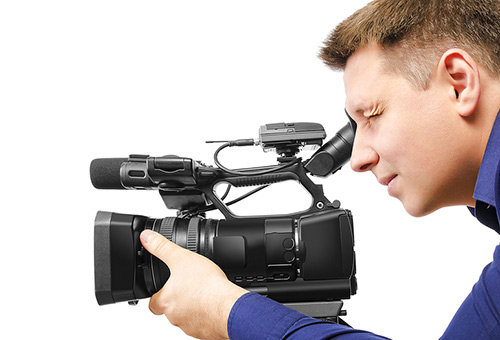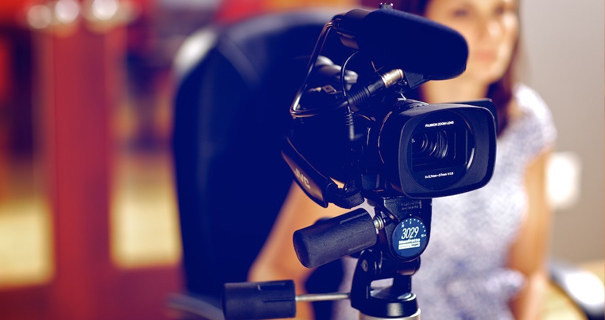Legal Videography: An Innovative Approach to Capturing Legal Testimonies
Legal Videography: An Innovative Approach to Capturing Legal Testimonies
Blog Article
Why Legal Videography Is Critical for Accurate Court Recordings
The duty of legal videography in court settings can not be overemphasized, as it serves as a necessary tool for maintaining the integrity of court records. The effects of integrating legal videography right into standard court methods raise essential inquiries about its broader effect on the lawful system.
Significance of Visual Proof
In the world of lawful proceedings, the importance of aesthetic proof can not be overemphasized. Aesthetic proof offers as an effective tool in establishing truths, substantiating testimonies, and boosting the overall quality of a case. This kind of proof, which consists of photos, video clips, and layouts, can give a tangible context that verbal descriptions typically do not have, therefore offering courts and courts a more clear understanding of the circumstances surrounding a case.
Moreover, visual evidence help in the retention of details. Human cognition is naturally aesthetic, and people are more probable to keep in mind and understand info provided in a visual style. In the court, this can be essential, as compelling visual evidence can sway point of views and enhance the story provided by legal representatives.
Additionally, making use of visual evidence can lessen misunderstandings and uncertainties that typically occur from spoken exchanges. By offering a direct representation of occasions, aesthetic evidence helps to remove subjective analyses and promotes a more unbiased exam of the truths. The assimilation of visual proof right into legal process not only reinforces the honesty of the judicial process yet likewise enhances the likelihood of attaining a just end result.
Catching Non-Verbal Cues
Using advanced videography strategies can substantially enhance the capture of non-verbal hints during legal process. Non-verbal communication, consisting of facial expressions, body movement, and eye call, plays a crucial function in sharing emotions and purposes that may not be explicitly mentioned in verbal statement. legal videography. Lawful videography employs high-def cameras and calculated angles to make certain that these subtle hints are recorded with clearness and precision
The capacity to analyze non-verbal actions can provide important context to statements made throughout court sessions. For example, a witness's reluctance or self-confidence can be analyzed through their pose or motions, possibly influencing the jury's perception of reputation. The usage of close-up shots can aid concentrate on an audio speaker's expressions, permitting for a more nuanced understanding of the testimony.
Furthermore, integrating numerous camera angles can create a comprehensive view of communications, highlighting characteristics in between events entailed. This diverse technique not just boosts the accuracy of the court document however likewise aids in preserving the honesty of the judicial procedure - legal videography. Eventually, capturing non-verbal cues with lawful videography fosters a richer, extra full depiction of court proceedings

Enhancing Statement Integrity
The integrity of statement can be significantly strengthened with making use of premium legal videography. Video clip recordings act as an unbiased tool that catches not just the spoken words of witnesses yet also the subtleties of their delivery, including tone, pacing, and psychological expressiveness. This diverse documents offers a more clear understanding of the witness's trustworthiness and intentions, which can be essential in lawful procedures.
In addition, legal videography reduces the possibility for misinterpretations that might arise from Resources composed records alone. When jurors can observe a witness's disposition and body movement in combination with their testimony, they are much better equipped to evaluate the authenticity and integrity of the proof offered. This visual context can strengthen the testimonial story, making it extra compelling and trustworthy.
In addition, the presence of a video recording can prevent possible incongruities in testimony. Witnesses may be much more careful in their declarations when they recognize they are being recorded, causing even more precise and genuine accounts. Overall, top quality legal videography improves the stability of statement, making sure that the court has accessibility to a total and truthful representation of the truths as conveyed by the witnesses.
Supporting Appeals and Reviews
Legal videography plays a vital duty in sustaining charms and evaluations by supplying a detailed aesthetic record of court proceedings. This visual documentation captures not just the talked words of witnesses and lawyers however also the nuances of body movement, intonation, and court dynamics. Such elements can be pivotal in understanding the context of testimonies and debates provided.
In the appellate process, where the emphasis is on errors of regulation and step-by-step fairness, a video document can work as a crucial tool for appellate courts. It enables courts to evaluate the original test context, making sure that decisions are based upon a full understanding of the procedures. The ability to aesthetically examine the attitude of witnesses or the interactions between events can disclose understandings that written transcripts might ignore.

In addition, legal videography can assist in clarifying uncertainties in testimonies or procedural judgments, thereby reinforcing the basis for over here an appeal. By using a reliable, objective account of what taken place in court, legal videography not just supports the honesty of the legal process yet also equips all parties included to make enlightened decisions concerning their instances.
Improving Court Procedures
Enhancing court room effectiveness, legal videography enhances procedures by giving immediate access to visual records of procedures. This innovation permits courts, attorneys, and juries to revisit vital testament and proof, making sure that all events have a clear understanding of the instance. By recording the subtleties of spoken and non-verbal interaction, videography improves the record, making it easier to understand the context and weight of testimonies.

Furthermore, video recordings can assist in remote participation in hearings, permitting higher flexibility in organizing and participation, which is specifically important in intricate situations entailing several stakeholders.
Conclusion
To conclude, legal videography plays a crucial role in making sure accurate court recordings by supplying essential aesthetic proof that captures both spoken and non-verbal communication. This method boosts the reliability of testaments, supports appellate evaluations, and simplifies courtroom processes. By cultivating an extensive understanding of court room dynamics, legal videography eventually adds to much more fair judicial end results, reinforcing the stability of the lawful system and facilitating notified decision-making.
Report this page